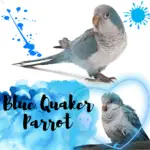- Good health / robust
- Suitable for indoor living
- Suitable for family life
- Sociable with animals
- Easy to maintain/groom
- Intelligent
- Player
- Affectionate
- Calm
- Independent
There are several subspecies of Pyrrhuras molinae. There are six that differ mainly by the more or less important extent of the scales, a more or less intense green coloration, and their distribution:
Pyrrhura molinae australis
Pyrrhura molinae flavoptera
Pyrrhura molinae hypoxantha
Pyrrhura molinae molinae
Pyrrhura molinae phoenicura
Pyrrhura molinae restricta
The most common in captivity are Pyrrhuras molinae, Pyrrhuras molinae australis, and Pyrrhuras molinae restricta.
Their plumage displays various colors but remains generally green, especially at the cheeks, hence their name. The back and top of the wings are dark green, and very intense. Their breasts have characteristic scales of brown, golden, or bright red color. The diets are from an intense blue to turquoise and the tail red to burgundy.
Their head is more or less grayish with areas of black at the level of the forehead. The cap, nape, beak, and legs are usually black in color. Their eyes have small white eye circles, stripped of feathers, a characteristic common to conures, and their iris is brown.
Origins of Green cheeked parakeet
Pyrrhura Molinae, also known as the Green-cheeked Conure or Green Cheek Conure or Green Cheeked parakeet or Green cheek parakeet is part of the Family Psittacidae.
This bird is found in the wild in Argentina, America, Bolivia, and Brazil where the five subspecies that subdivide Pyrrhura Molinae are distributed: Pyrrhura Molinae australis, Pyrrhura Molinae Molinae, Pyrrhura Molinae Sordida, Pyrrhura Molinae Sordida, and Pyrrhura Restricta.
These five subspecies are difficult to identify, details on the dresses are the only clues. In its natural environment, it lives in colonies in forests.
Green cheeked conure
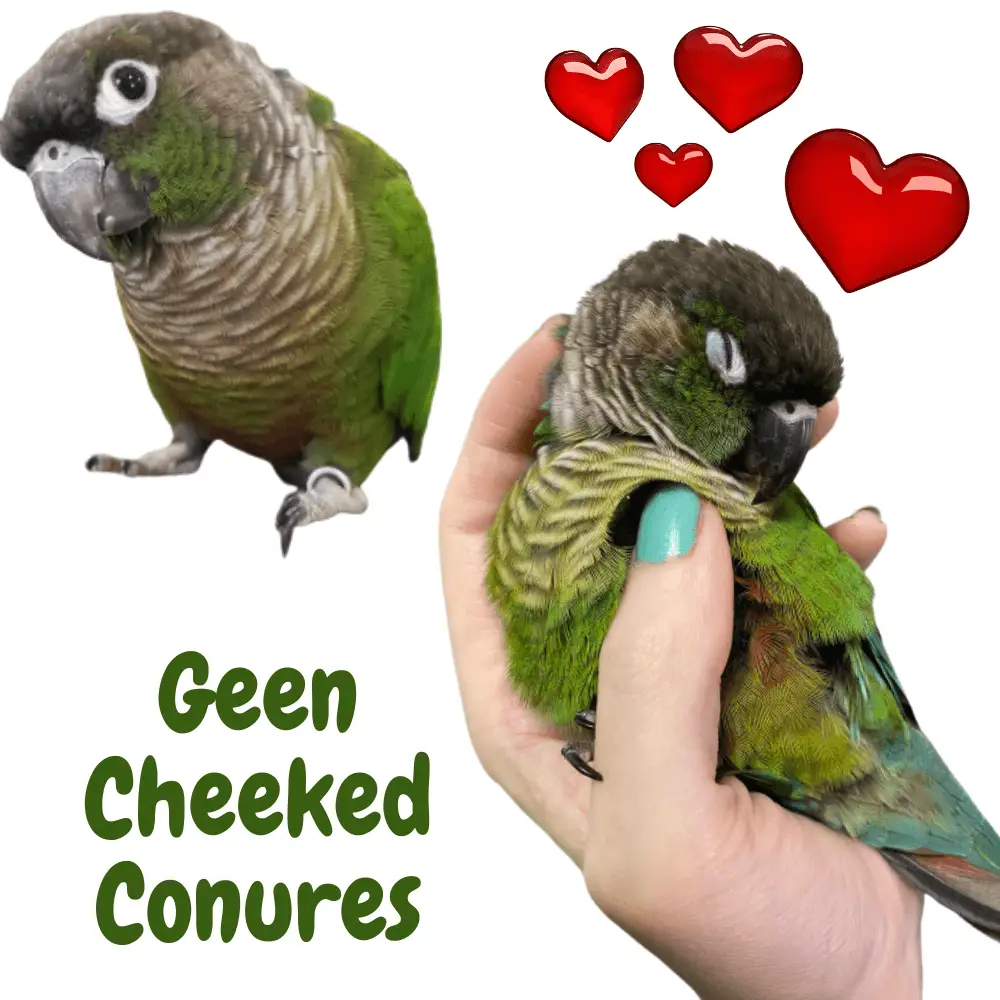
Physical characteristics
Weight and size
Weight: Its weight is around 80-100 grams.
Size: It measures 20 and 30 cm approximately, which makes it a medium-sized bird.
Dress and feathers
Also called green-cheeked conure, this bird benefits from shimmering colors with green as the base color. Its wings are often cyan blue. As for his chest and tail, they sport cherry red hues. A festival of colors!
General Appearance
Green cheeked parakeet is recognizable by its hooked beak, its colors (with a predominance of green), and its red tail. His eyes, round and black, are hemmed in white. The conure is slightly stocky. There is no dimorphism between males and females and only a DNA test will differentiate them.
There is a debate about the difference between parrot and parakeet that we find difficult to decide.
Green cheeked conure
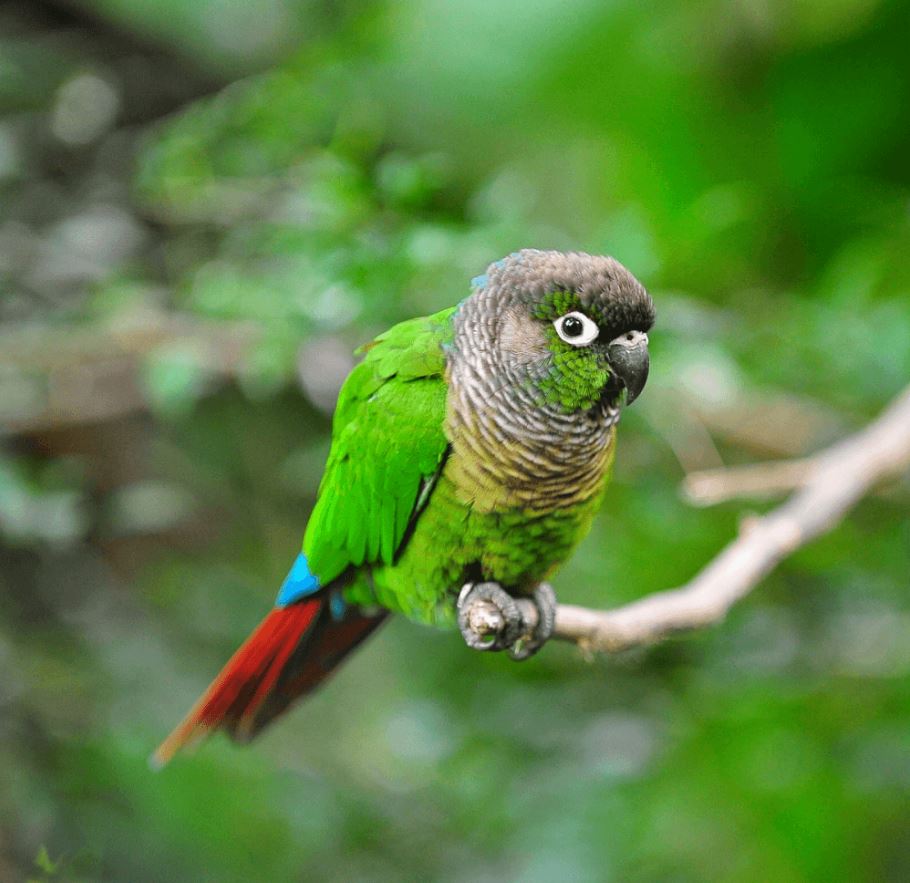
Characters of the Conure Green cheek
The character of the animal
This bird is particularly known for its character traits that will make it an exceptional friend. Indeed, the conure is affectionate: she will not hesitate to come and curl up in your arms and ask for your caresses. This bird lives both in your company and alone, and it will enjoy playing for a long time in its aviary: hence the interest in putting at its disposal many toys.
Green-cheeked parakeet
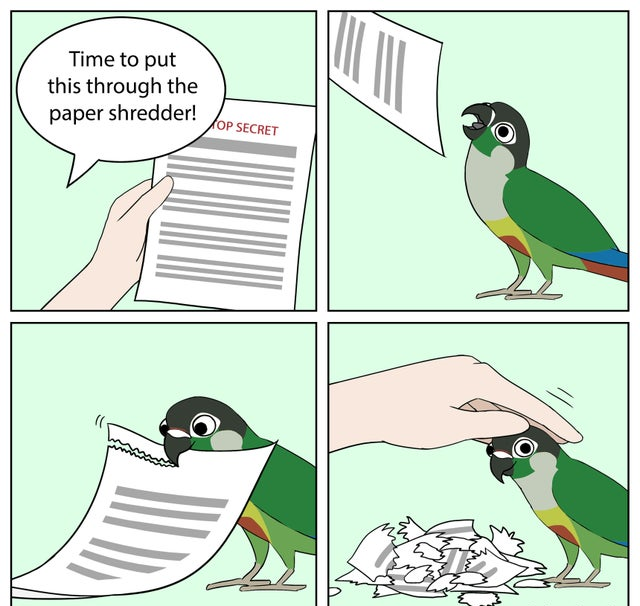
Indeed, this bird is dynamic and sparkling and likes to exert itself. If you keep it in an aviary it will have to be of a consequent size otherwise your friend will end up bored and sometimes even become aggressive.
The conure is of a curious nature, so it will be necessary to be vigilant and check that it is not likely to be injured. As for their screams, everyone may be annoyed or on the contrary seduced by their vocalizations.
Reproduction
The breeding season is spring. Quite territorial, it is better to isolate the pairs for the breeding season. Conures lay between 3 and 6 eggs, at the rate of one every other day. Incubation lasts between 21 and 23 days. The female alone can begin to hatch from the second or third egg laid. The young will come out of the nest around the age of 6 weeks and will be fully weaned around 8-9 weeks. Sexual maturity is reached between 1 and 2 years.
Sexual dimorphism
There is no apparent sexual dimorphism, males and females have an identical coloration, for the same mutation. From a behavioral point of view, from my experience, I will say that females have more assertive personalities. Of course, it depends on each individual.
Singing and vocalizations
On the vocal side, the conures of the genus Pyrrhura are known to be quite noisy. Of course, the noise is not comparable to a Macaw or a Cockatoo or Amazon parrot but it can be uncomfortable. They are usually expressed in the morning and evening. Some individuals have a lot of talent to imitate the sounds of the house or repeat a few words…
The following link provides several audio recordings to your headphones! Talking-parrots
Color variations
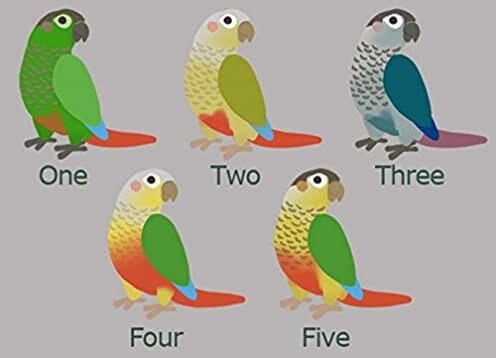
The conure color varieties have been selectively bred in aviculture:
- Cinnamon
- Yellow-sided
- Pineapple
- Turquoise
- Green/red/blue

The health of Green Cheek Conure
Life expectancy
The green cheek conure life expectancy of this species is between 25 and 30 years.
Common health problems
Initially, it is advisable to make an appointment with the veterinarian to check that your bird is not a carrier of diseases. Of course, it will also be necessary to quarantine it as soon as it arrives in order to protect the other inhabitants of the aviary from any contamination.
The most common diseases:
- Chlamydiosea, this contagious disease for humans is certainly the one that all bird lovers know. The symptoms you will observe in your bird are diarrhea, runny eyes, breathing problems, it will hardly eating anymore, and vomiting.
- PBCD, commonly known as beak and feather disease, is a deadly disease generated by a virus. The beak during its regrowth takes anomalous forms and the feathers will become dull and fall.
- Pacheco’s disease is caused by herpes and can affect all parrots and parakeets. The main symptom observed will be the urine of an avocado green color caused by the attack of the liver; the general condition of your bird will also alert you: it will become amorphous.
- PDD is characterized by dilation of the preventable (pouch located before the stomach). The bird no longer digests its food and loses weight, its droppings smell particularly bad. The origin of this disease can be explained by the fact that, in freedom, your bird may have ingested lead paints that are still found on our walls or railings.
We remind you that you must have your bird examined in order to screen for these diseases as soon as it arrives, they are fatal and contagious. Only a screening by the veterinarian will make it possible to make the diagnosis.
Contamination occurs in several ways: by sneezing, and by breathing in the dust released by feathers and droppings.
Green-cheeked parakeet

Maintenance of the Green Cheek Conure
Lifestyle
Green cheek conure is fabulous. He will adapt very easily to his environment and to all members of the family. It could be that he shows more affection towards a family member which will not prevent him from being very sociable with the whole family.
The conure likes to play and have fun, do not hesitate to offer him many toys rather in wood, rope, or leather. Pet stores are full of them.
It is a bird that loves water, so it is essential to offer it containers in which it can bathe. It should be emphasized that the conure likes to keep its environment clean, it will throw out of its cage all the seed waste and droppings. This, therefore, requires maintenance of the outside of the cage.
Feeding
Parrot feeding: Balanced food is a must. It should therefore not be based solely on seeds that are sometimes too high in fat. There are adapted mixtures rich in vitamins in pet stores. It is necessary to leave at its disposal a bowl with clean food because your bird will feed all day.
Your conure, very greedy will also appreciate sweets based on millet or honey.
The permanent presence of clean water in its bowl is essential, a lack of water can have dramatic consequences for your bird.
In nature, conures feed on seeds, berries, fruits, flower nectar, and other various vegetation.
In captivity, the types of diets are varied: seeds, extruded, fruits and vegetables… For more information on proper nutrition, I advise you to refer to the corresponding articles!
The threat, protection status, and detention:
The green-cheeked conure is a fairly common species. It is then classified in Appendix II/B of the Washington Convention and is classified Domestic for mutations.
What is it like to live with a Green Cheek – Guide to Green Cheek Conure Behavior
SOURCE:Guide to Green Cheek Conures


